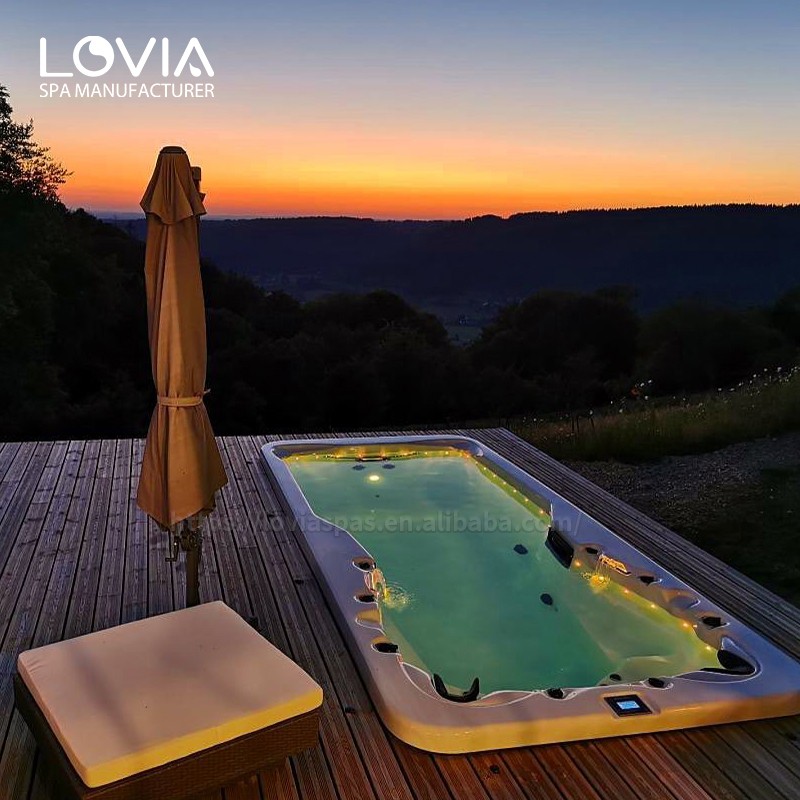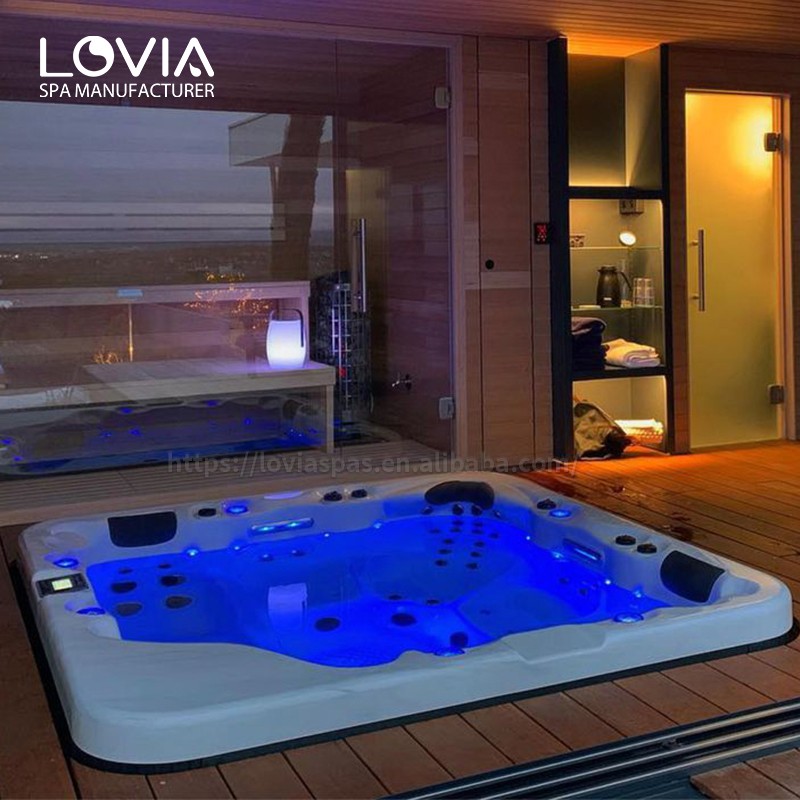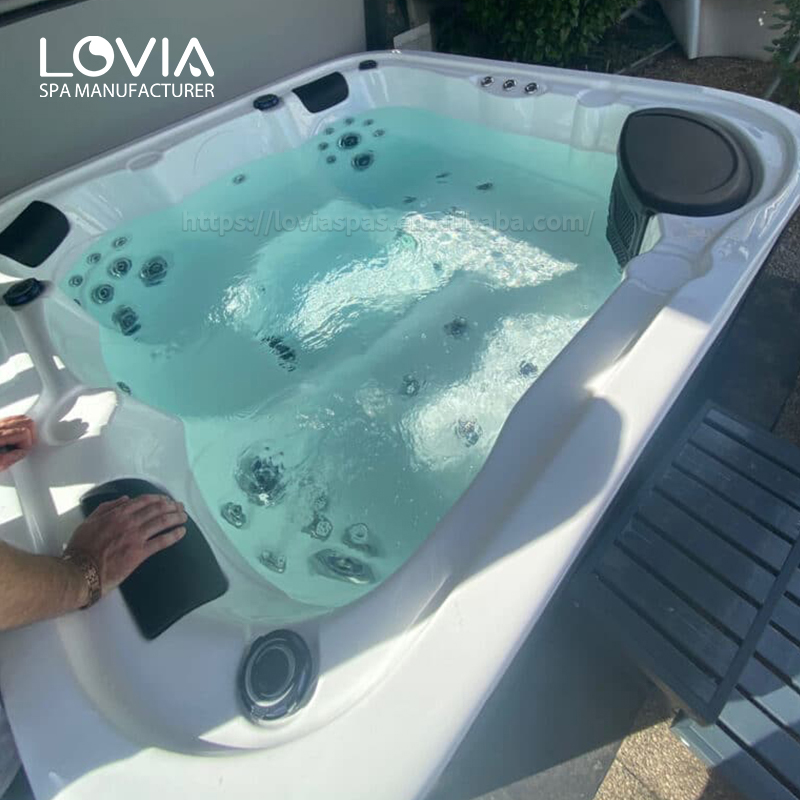
What are the pros and cons of plug n play hot tubs?
2025-06-17 15:30Plug n play hot tubs are hot tubs that can be plugged directly into ordinary household power to operate. Compared with traditional hot tubs, these hot tubs are easy to install and do not require a professional electrician to make complicated electrical connections. In recent years, they have become more and more popular with consumers because of their convenience and relatively low initial cost.
However, plug n play hot tubs are not better than traditional models in all aspects. Their convenience comes with some limitations, so a comprehensive analysis of their pros and cons is needed. This article will discuss the pros and cons of plug n play hot tubs in detail to help consumers make an informed purchasing decision.

What are the advantages of plug n play hot tubs?
Plug n play hot tub advantages:
1. Easy installation
2. Portability and flexibility
3. Low initial cost
4. Energy saving
5. Simple operation
1. Easy installation
One of the biggest advantages of plug n play hot tubs is the simplicity of installation. Traditional hot tubs usually require 220-volt electricity and must be installed and wired by a professional electrician. However, plug n play hot tubs only require a regular 110V or 120V power supply to operate, and most homes already have such power outlets. Users can simply plug the tub into the power supply and use it without the help of professional technicians.
Easy installation means that users can save a lot of time and money. Especially when there is no need for complex electrical modifications or drilling, consumers can enjoy the comfortable experience brought by the tub soon after purchase.
2. Portability and flexibility
Plug n play hot tubs are usually smaller and lighter than traditional hot tubs. Since they do not need to be fixed in a specific place, they can be moved relatively easily. This is especially important for users who rent or live in a short-term residence, because they can take the tub to a new residence.
This portability makes plug n play hot tubs more flexible, and users can choose to use it in different locations such as gardens, courtyards or terraces as needed, without having to worry about the complicated layout of power supply and plumbing.
3. Low initial cost
Traditional hot tubs usually require a high initial investment, including not only the price of the tub itself, but also the cost of electricians and electrical modifications. Plug n play hot tubs are relatively inexpensive, making them a great choice for consumers who are on a budget but still want to enjoy a spa experience.
Since plug n play hot tubs do not require additional installation costs, users can save a lot of money on electrical modifications. In addition, their maintenance costs are relatively low, further reducing the total cost of use.
4. Energy efficiency
Plug n play hot tubs are usually equipped with smaller heating systems and water pumps with lower power. This means that when operating normally, they also consume less energy. For consumers who want to save energy, this tub will save more electricity bills than high-powered 220V traditional hot tubs.
In addition, since these tubs have a smaller capacity and heat a relatively small amount of water, users do not need to wait for a long time for the water temperature to rise, further reducing the energy consumed during the heating process.
5. Simple operation
Another advantage of plug n play hot tubs is that they are very simple to operate. Since they are designed mainly for convenience, they are usually more intuitive in the control interface, and users can adjust functions such as water temperature and jet intensity by pressing a few buttons. This is undoubtedly a friendly design for those users who are not very technically proficient.

What are the disadvantages of plug n play hot tubs?
Although plug n play hot tubs have a variety of advantages, they also have some disadvantages. For some users, these disadvantages may limit the effectiveness or comfort of their use.
Disadvantages of plug n play hot tubs:
1. Slower heating speed
2. Weak hydromassage effect
3. Limited capacity
4. Limitations on heating and massage
5. Limited applicable environment
1. Slower heating speed
The heater of plug n play hot tubs is usually less powerful (110V or 120V power supply limits its power), so it heats the water more slowly. Compared with traditional 220V hot tubs, the heater of plug n play bathtubs usually takes longer to raise the water temperature to the ideal level.
For example, the heater power of traditional hot tubs can reach 4000 to 6000 watts, while the heater power of plug n play bathtubs is usually only about 1500 watts. This lower heating power means that users may need to wait for several hours before the water is heated to the desired temperature, especially when using it in colder weather.
2. Weaker hydromassage effect
Traditional hot tubs are usually equipped with more powerful water pumps and jet systems, which can provide an intense water massage experience. However, due to power limitations, plug n play hot tubs have smaller pumps, and the hydromassage effect may not be as intense as traditional bathtubs. This may be a significant disadvantage for those users who pay special attention to the hydromassage effect.
In addition, the number and distribution of jets in plug n play hot tubs are also limited, which means that they cannot provide a deep full-body massage like high-end traditional hot tubs.
3. Limited capacity
Plug n play hot tubs are usually designed to be compact to accommodate the limitations of 110V power supply. This means that they are usually smaller in capacity and can usually only accommodate 2 to 4 people. Compared with the design of traditional bathtubs that can accommodate more people, plug n play bathtubs are more cramped when multiple people are used at the same time.
In addition, the smaller water capacity means that the water temperature of plug n play bathtubs may drop faster when used for a long time, especially when used outdoors, and the insulation effect and continuous heating ability of the bathtub will be limited.
4. Limitations of heating and massage
Most plug n play hot tubs cannot run the heater and massage jets at the same time. Due to power load limitations, if users want to use the heating function and hydromassage function at the same time, it may cause circuit overload. Therefore, users may need to pause the hydromassage during heating, and vice versa, which is inconvenient for the overall experience.
For users who want to perform hydromassage while heating the water, this design limitation undoubtedly reduces the comfort and continuity of the experience.
5. Limited applicable environment
The power requirements of plug n play hot tubs are relatively low, but this also limits its scope of application. In some environments, the 110V or 120V power supply may not be stable enough, or the socket location may be inconvenient. In this case, users may not be able to place the bathtub in their ideal location, affecting the user experience.
In addition, due to power limitations, plug n play hot tubs are generally more suitable for use in warm climates. In cold winters or low-temperature environments, the bathtub's heating system may have difficulty maintaining water temperature, resulting in a decline in user experience.

Who are plug n play hot tubs suitable for?
Although plug n play hot tubs have some shortcomings, their unique advantages make them suitable for specific user groups. Here are a few groups of people who are more suitable for plug n play hot tubs:
1. Renters or short-term residents: Since plug n play hot tubs do not need to be permanently installed, they are very suitable for those who live in a short-term residence, especially renters. Such users can easily take the tub with them when they change their residence.
2. Consumers with limited budgets: For consumers with limited budgets who want to enjoy the hot tub experience, plug n play hot tubs are an affordable choice. They have low initial costs and installation fees, and relatively low maintenance costs.
3. Users who need easy installation: If the user is not familiar with electrical or plumbing installation operations and wants to minimize complicated installation steps, plug n play hot tubs are a good choice. Just plug in the power supply and the tub is ready to run.
4. Small families or individual users: Since plug n play hot tubs have a small capacity, they are more suitable for households with single or a few people. If it is just for personal relaxation or occasional family gatherings, this type of tub can fully meet the needs.

To sum up: If you are looking for simple and fast installation, low-cost maintenance and convenient use experience, then plug n play hot tubs are undoubtedly a very suitable choice. It excels in convenience, portability and energy saving, and is especially suitable for consumers with limited budgets or those who do not want to carry out complicated electrical installation.
However, if you have higher requirements for the hydromassage effect of the hot tub, or need a larger capacity and faster heating system, then the traditional 220V hot tub may be more in line with your needs.
